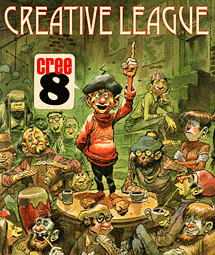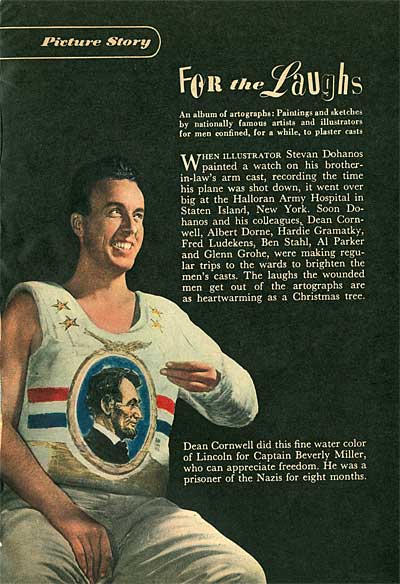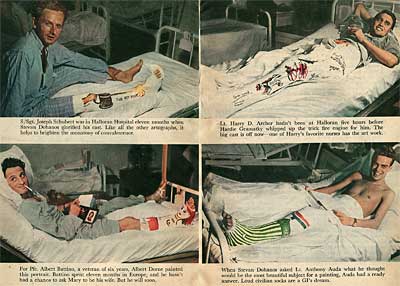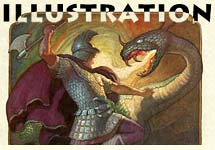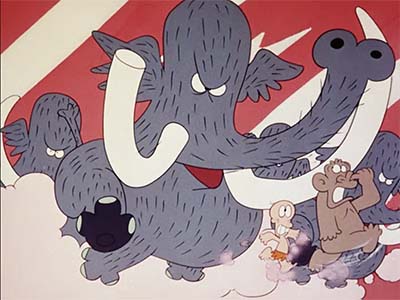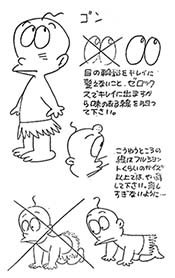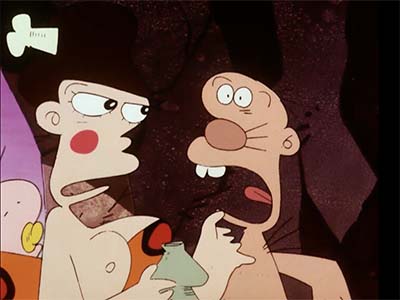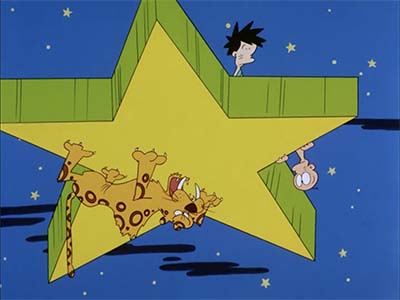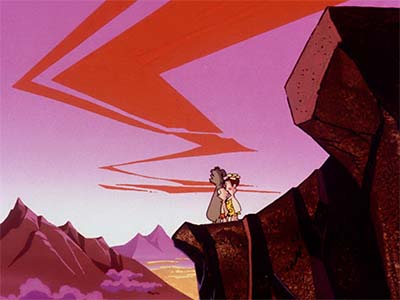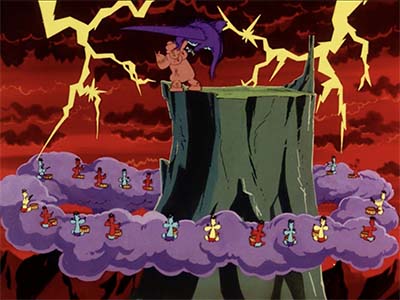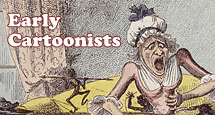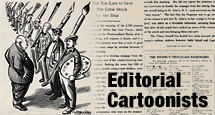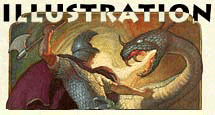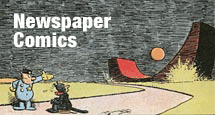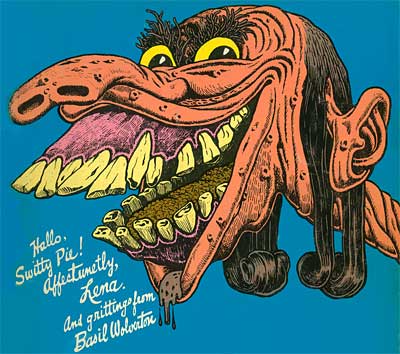
Here are some features from the fanzine, Graphic Story Magazine devoted to the genius of Basil Wolverton.
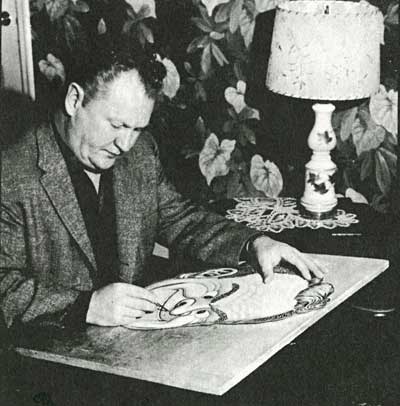
Here is an article Wolverton wrote in 1948 for the Daily Oregonian…
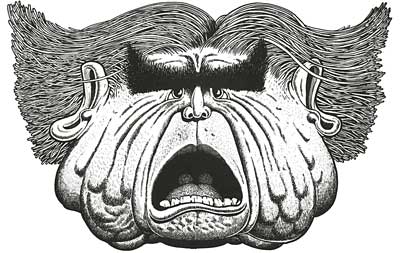
ACOUSTICS IN THE COMICS
By Basil Wolverton
The so called comic strip on my drawing board showed a heavy horse stepping on a bozo’s bean. The horse was tramping on the guy’s head in a delicate way, of course, so the situation would be more entertaining than grusome- depending on the reader’s sense of humor. But, like an old silent movie, the cartoon needed something, and that something was sound. There had to be a heavily lettered word oozing out from the exact point of contact between the horse’s hoofs and the man’s head. Thus the reader, pronouncing that sound word to himself, would actually hear within his mind the excitingly comical noise that would eminate from such action.
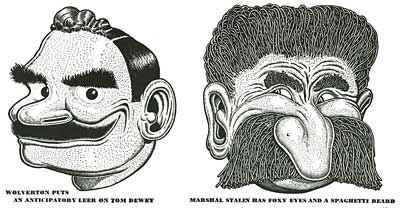
Summoning both brain cells hurriedly together, I tried desperately to imagine just what sort of sound would ensue if a nag were to step on someone’s skull. The word CRUNCH popped into my mind. Then CRONCH. Then CRANCH. I settled for CRANCH because somehow it seemed more refined. But before I could letter the word on the cartoon, I suddenly recalled my latest unhappy interview with the person who publishes my comic strips.
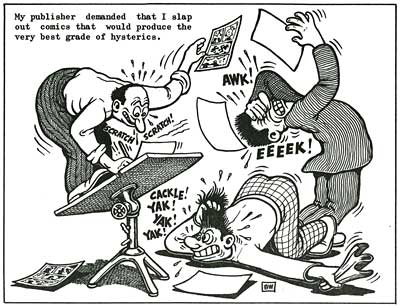
“I want realism!” he had bellowed. “No more of this wild imaginitive stuff that’s causing some people to want to ban our comic books! From now on, get that realism in there, and your strips will be horribly funny! Then the readers will go into hysterics and laugh like crazy, and our books will be acclaimed the most laugh provoking on the stands!” That meant that an imaginative word like CRANCH was taboo. It was up to me to get the real sound word. I looked furtively about as a preposterous plan permeated my pate.
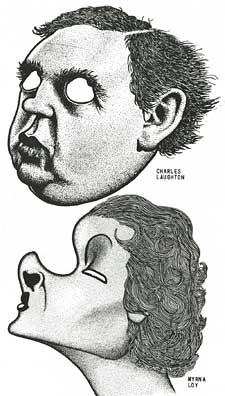
 It was easy to rent a horse. It wasn’t as easy to argue my brother in law into placing his pan on the pavement, and letting me ride the nag over his noggin. “Horses are so heavy!” he foolishly kept countering. “Besides, I have a cold sore.” As he waddled away, I realized my plan was hopeless- until he stumbled over something in the street. Before he could pull his chin out of the asphalt, I had steered the rented mare over him, and her hind hoof scored a bull’s eye on his bare bean.
It was easy to rent a horse. It wasn’t as easy to argue my brother in law into placing his pan on the pavement, and letting me ride the nag over his noggin. “Horses are so heavy!” he foolishly kept countering. “Besides, I have a cold sore.” As he waddled away, I realized my plan was hopeless- until he stumbled over something in the street. Before he could pull his chin out of the asphalt, I had steered the rented mare over him, and her hind hoof scored a bull’s eye on his bare bean.
The sound? It was far from CRANCH. The real thing turned out to be SLORNK. It was a sort of a slippery liquid sound. That was probably because my brother in law has oily skin and a thin skull. With the noxious noise fresh in mind, I streaked into my studio and feverishly lettered the word SLORNK boldly across the cartoon.
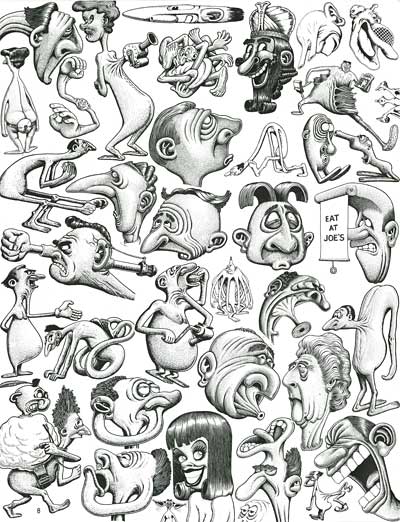
Weeks later the fan mail began pouring in. They all said the same thing. In fact, both of them were worded the same. The first one read “I want to congratulate you on that completely true to life cartoon you drew of the horse stepping on a man’s head. The word SLORNK describing the sound was absolutely accurate. I know, because I am always getting my head stepped on by some careless nag.” The second letter was the same as the first, except for the signature. I figured when I wrote them that there should be some difference. Otherwise the publisher might get wise when I showed them to him.
He was dumbfounded when he saw them. After recovering, he slapped me on my sunburn and rammed one of his dollar cigars into my mush. Unfortunately, he stuck the wrong end into my mouth. Besides, he was smoking it. “Two fan letters in eleven years” he murmured incredulously. “My boy, you have arrived! It’s just like I predicted,” my publisher beamed, “your horribly realistic sound words are paying off!”
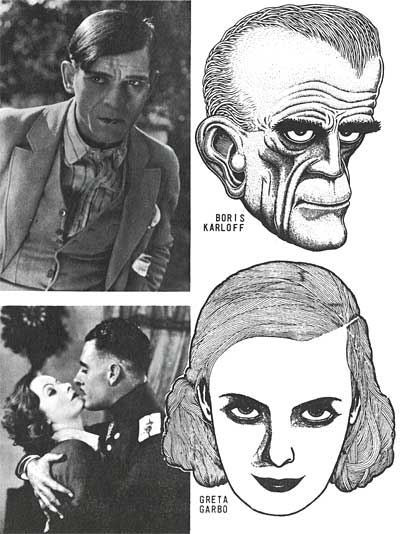
I leaped on his desk. “Then I’m ripe for a raise?” I queried. peering so anxiously and closely into his red-rimmed readers that I could detect his wife’s fingernail scratches on his contact lenses. Anticipation was causing me to quiver like a rat terrier with radio-active fleas on a cold day. The suspense was terrible. Finally he opened his trap. He was grinning. This was the day for which I had waited eleven long years. “It does not!” he roared, brushing me off his desk. “I was merely feeling pleased that at last you may be worth almost as much as I’ve been paying you!”
While I gathered my teeth up off the floor, he pointed at me demandingly. “If you want a raise, every one of your sound effect words will have to be absolutely authentic! In other words, don’t draw a single sound word into your strips until you’ve actually staged the cartoon situation with real people and things!”
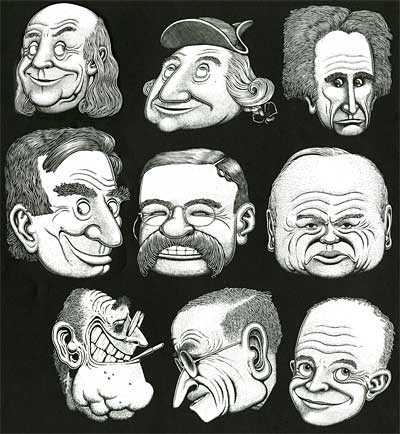
(Incidentally, you readers should stop worrying about my brother in law. Ever since the day the horse stepped on his head, he has had nothing but good luck. Why shouldn’t he, what with a horseshoe embedded in the back of his bean? Furthermore, he’s the only living person who can slide his head inside those record-in-the-slot phonographs without crushing his ears.)
My publisher pointed at me demandingly. “If you want a raise, every one of your sound effect words will have to be absolutely authentic! In other words, don’t draw a single sound word into your strips until you’ve actually staged the cartoon situation with real people and things!”
As for my publisher’s demands, they resulted in my running out of friends and relatives within a week. Neighbors complained about howls and screams emanating from the studio. People su
ed. The ASPCA hounded me. My wife and fourteen kids swore sudden allegiance to the Progressive party, then fled to Siberia.
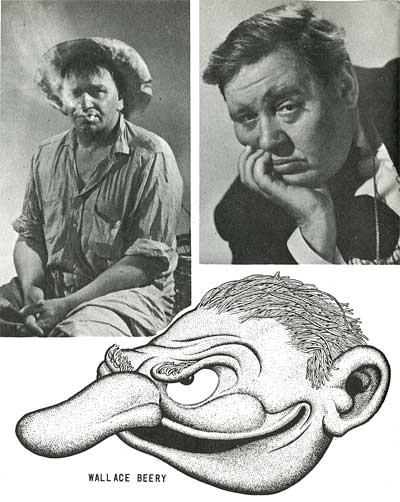
Meanwhile, however, I managed to catalog hundreds of authentic sound words- enough to last me for a lifetime of cartooning, and enough I thought, to cover any and all comic situations, regardless of how terrible. I was so proud of my achievement that I showed the lengthy list to my publisher. Here are some of the more subtle sound words describing various clashings, crashings, slashings, bashings, hashings, mashings, etc. Read the situation, then voice the accompanying sound word to yourself, and note how vividly the picture then comes to your mind:
- Pinheaded person pullingg pate out of a pop bottle: FOINK!
- Glass eye falling into tomato soup: PLOOP!
- Glass eye falling into a pitcher of thick syrup: PLOFF!
- Man sitting on short tack: SQUINCH!
- Man sitting on long tack: SQUONCH!
- Uppers dropping in gob of putty: FLUP!
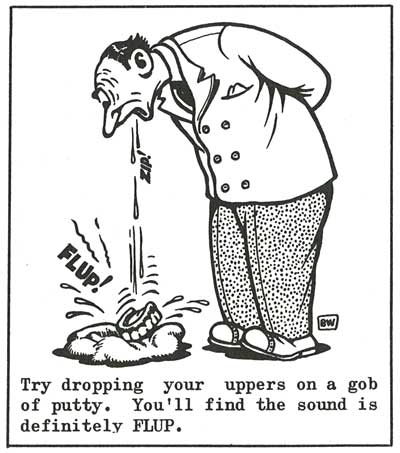
- Hungry cannibal filing eyetooth: FWATCH!
- Man with calloused feet crossing rough linoleum: SKIRP! SKIRP!
- Thumb gouging eye: SPOP!
- Hot lava speweing on WCTU convention: FOOSK!
- Hot lava spewing on Elks’ convention: SSSCRISH!
- Person skidding on hot stove in bare feet: SCREESH!
- Beaver biting into wooden leg: CRASP!
- Car crashing into large vat of frogs’ eggs: SKWORP!
- False teeth falling through skylight: TWUNK!
- Sock in the face with Sears Roebuck catalog: PWOSH!
- Sock in the face with Montgomery Ward catalog: PWASH!
- Octopus slapping a tentacle on bald bean: SPOOP!
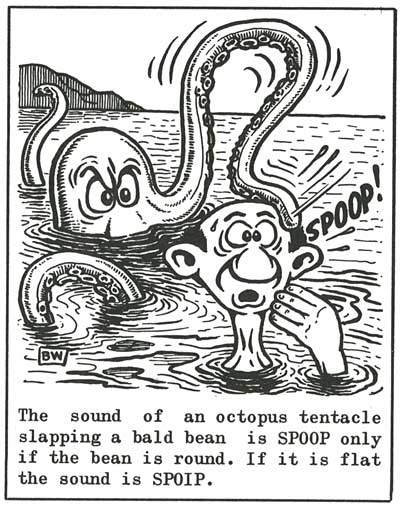
- Man dragging toenails over No.2 grade sandpaper: SKARP!
- Man falling on face in a barrel of wet teabags: FROMP!
- Sock in the kisser with a wet codfish: SCHALAMPF!
- Person socking wet halibut with his kisser: SCHLOOF!
- Lowers falling into a bucket of cup grease: UNPH!
- Man with small head drowning in a glass of tomato juice: GOIK!
- Woodpecker hammering on human head: DUD-DUD-DUD-DUD-DUD!
- Cannon ball landing in mush of toothless man: FWOCK!
- Two bald men colliding headon: KROCK!
- Garter snapping on varicose vein: SCHWIPP!
- Single BB shot landing on a cow’s udder: PWIP!
- Person pulling ponderous pate through a puny porthole: SPOOCH!
- Bear trap springing on human noggin: SPROCK!
- Rat trap springing on person’s big toe: SPACK!
- Man falling into a garbage can full of spoiled caviar: CROFF!
- Surgeon tossing gallstones into empty garbage can: KRANG!
- Man with one hair getting a haircut: WHICK!
- Person being kicked in the neck: PFWUMPFPH!
- Person getting kicked in snappers: PWACK!
- Measle germ snapping at skin: SCHLOPP!
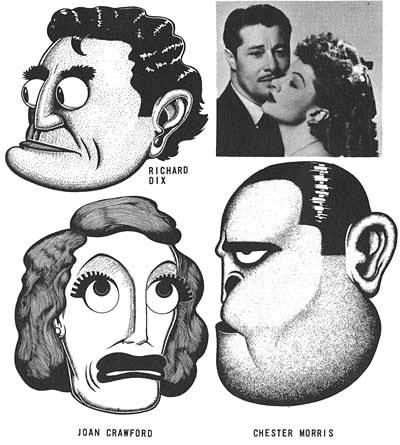
If you’ve been able to struggle through the foregoing list of cartoon words, perhaps now your acoustical sense has been sharpened to the extent that you can readily guess a situation just by reading a sound word. To test your ability, hee is a list of cartoon words denoting various noises. If you can guess the action by which even one of them is produced, then your extremely something or other.
SNIKK / SPIRP / FAMP / SWORP / SPITCH / KANK / IKK / SPRATCH / PWOT / YOTCH / KZEEP / KLISH / FEEMP / SHZWOP / KOPYP
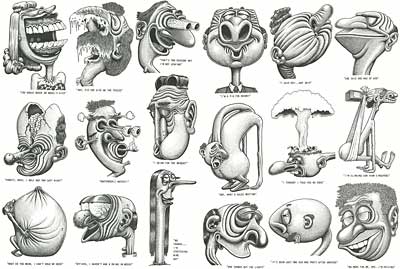
Now check your definitions with the following list. Even if you missed defining all the words, it’s no reflection on your intelligence. Fact is, the more you miss, the brighter you probably are. On the other hand, the more you can guess, the better comic strip cartoonist you can become- unless, unfortunately, you’re already one.
- SNIKK: The sound made by an African pygmy idly snapping his fingernail against his skull
- SPIRP: Nose being caught in an orange juicer
- FAMP: Corpulent person falling on back in a vat of peanut butter
- SWORP: Meteor hitting obese dame on back of neck
- SPITCH: Man sticking his head inside huge dynamo in action
- KANK: Crazed horsefly crashing into dome of empty-headed man
- IKK: Person with protruding eyeballs falling face down
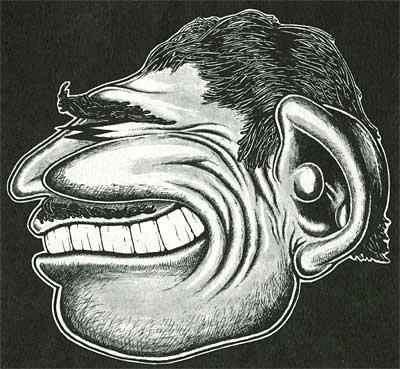
- SPRATCH: Court plaster being yanked off polose chest
- PWOT: Wet socks being tossed into the corner of the room
- YOTCH: Post office pen forming the letter O
- KZEEP: Man with rusty eyelid winking at gal
- KLISH: Man falling on chin on thin crusted beetle
- FEEMP: Mole (on chin) being hit with stray buckshot
- SHZWOP: Obese dame’s girdle splitting out
- KOPYP: Skin pore snapping shut on contact with cold air
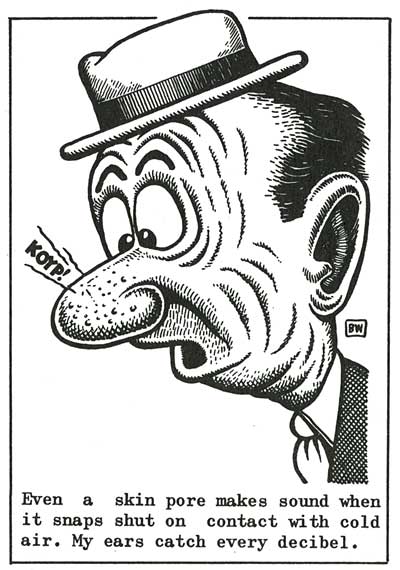
“Good work!” my publisher mumbled two days later, when he had finished reading the list. “Then I get the raise?” I gurgled hopefully. His brows knitted. (He was working on a pair of socks at the same time.) “Not until you complete that list by adding one more sound word! The word that’s missing is the one that describes the sound of a railway train running over a cartoonist’s conk!”
“That should be easy,” I chirped. “I’ll just-” Suddenly, the awful significance of his demand dawned on me. My publisher had conceived of this diabolical plan to prevent my getting a raise. But I would fool him.
A half hour later my noggin was resting uncomfortably on a railroad rail.
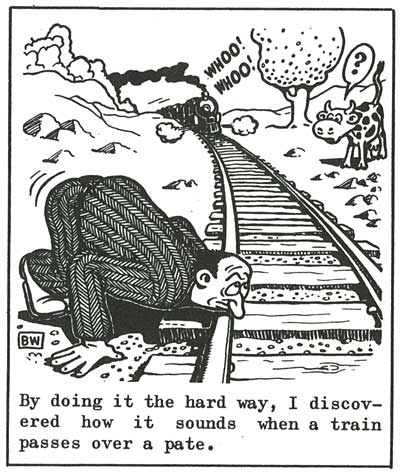
They told me later at the hospital that it wasn’t too bad. Only 22 cars, plus the locomotive had been derailed. “The train crew wanted the day off anyway” my doctor said. “They will be up later to thank you.” While he poured glue in the cracks in my conk, I struggled to recall the exact sound of the locomotive passing over my pate. I became frantic at the thought that it had eluded me. Then I remembered. How could I forget something that had been so forcefully crammed into my mind?
I raced out of the hospital and downtown to my publisher’s office. When that man saw the Scotch tape on my skull, he blanched a little. “Did you find out what the sound of a train running over a cartoonist’s head is?” he asked. “I did.” I announced triumphantly. He leaned expectantly so far forward that his rear suspender buttons flew off, zipped out the window, and nailed a burglar who was ransacking a safe in an office across the street.
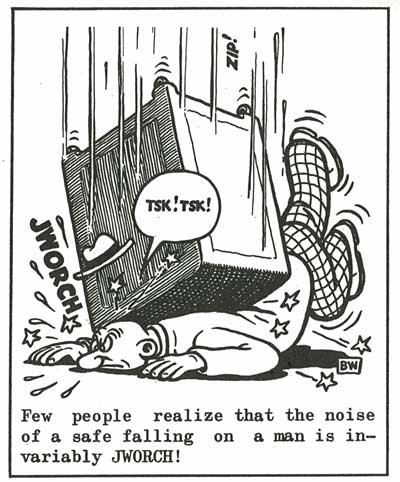
“What is the sound?” he asked shakily.
“It is GJDRKZLXCBWQ.”
“GJDRKZLXCBWQ?” he queried doubtfully.
“No. It’s GJDRKZLXCBWQ. The L is silent.”
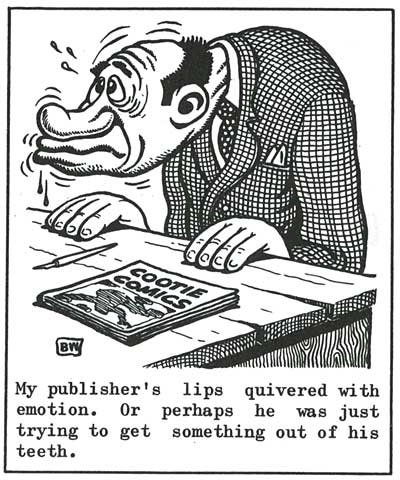
My publisher is not emotional. I have never known him to be moved to tears. But now his lips quivered violently. Or perhaps he was just trying to get something out of his teeth. “Now I have heard everything!” he blubbered.
“The raise.” I reminded him. “How about it?” “The raise? Oh yes. To show my appreciation for collecting the most complete and authentic list of cartoonists’ sound words, I’m going to double your salary!” Whereupon he reached into his wallet and tossed me twice as much as I had been getting previously per week.
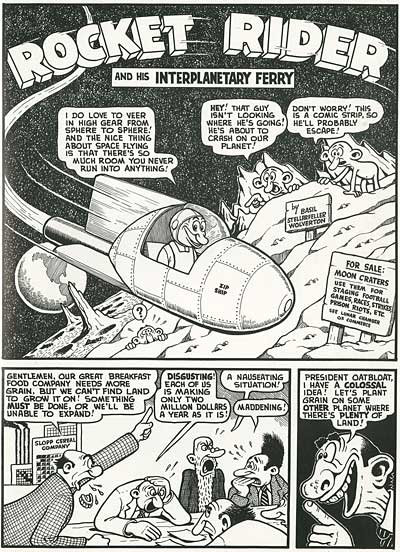
Then I realized that my list of sound words wasn’t quite complete until that moment. In all my life I had never heard that lush, lovely sound. It was a mild, whispery sound, barely audible.
Here it is: FMNW!
It was the sound made by my new doubled salary- two $1.00 bills brushing lightly together.
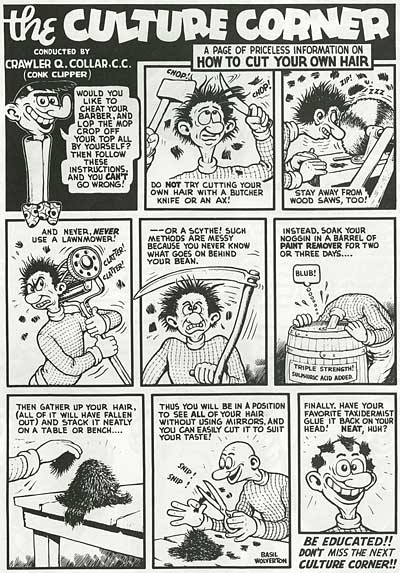
Stephen Worth
Director
Animation Resources


This posting is part of the online Encyclopedia of Cartooning under the subject heading, Comic Books.
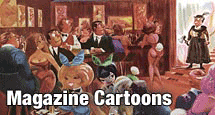

This posting is part of the online Encyclopedia of Cartooning under the subject heading, Magazine Cartoons.









 by
by 
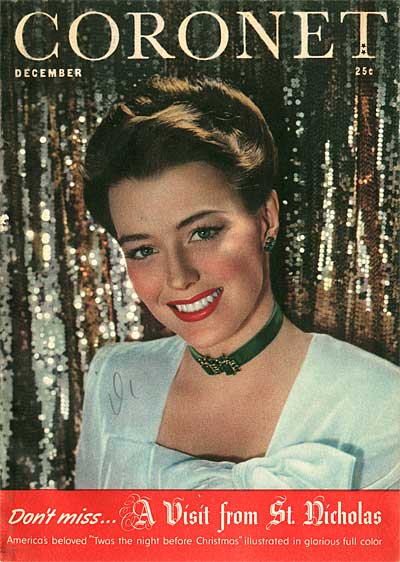
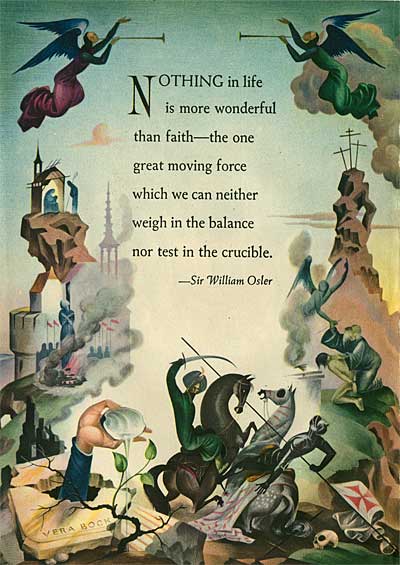
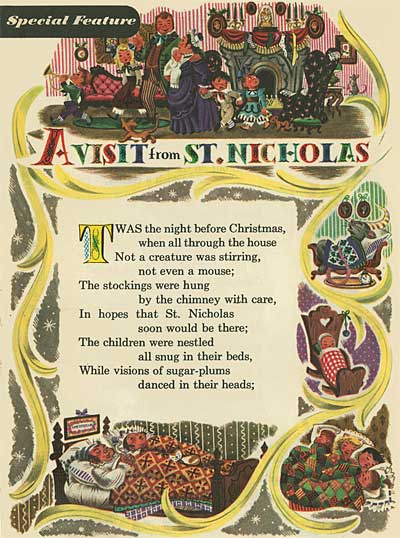
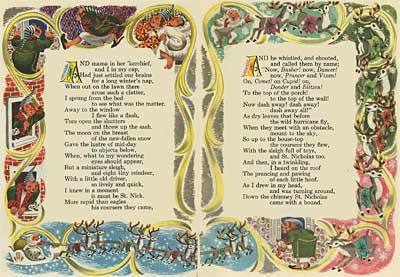
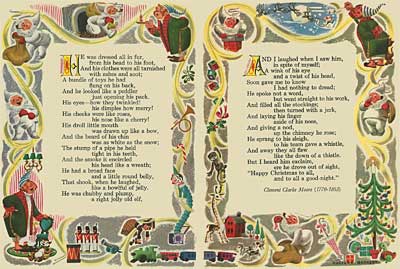
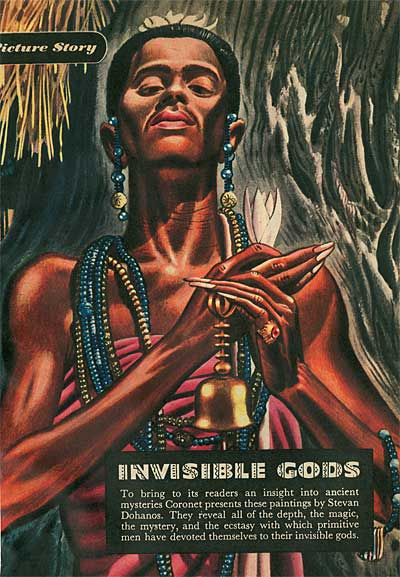
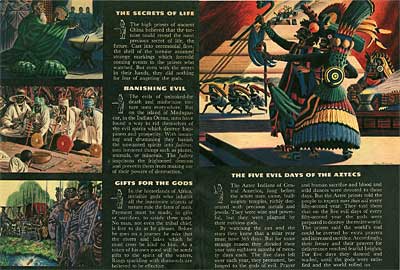
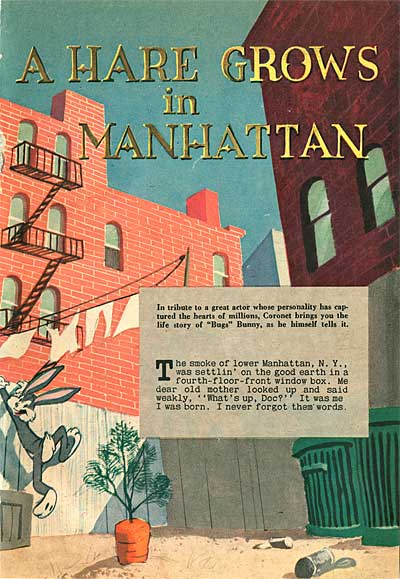
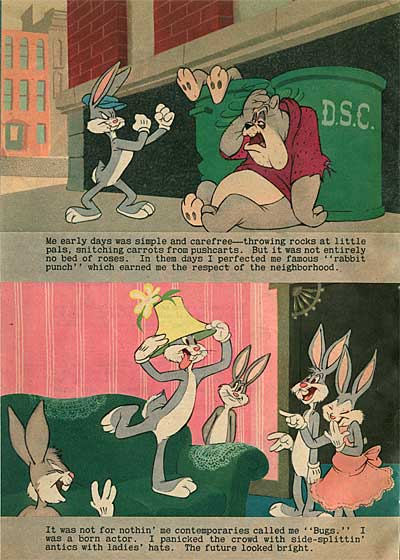
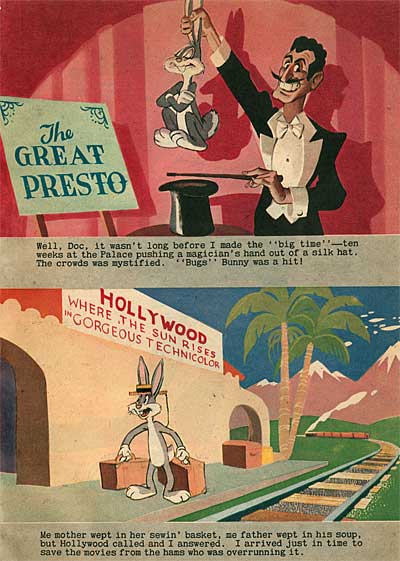
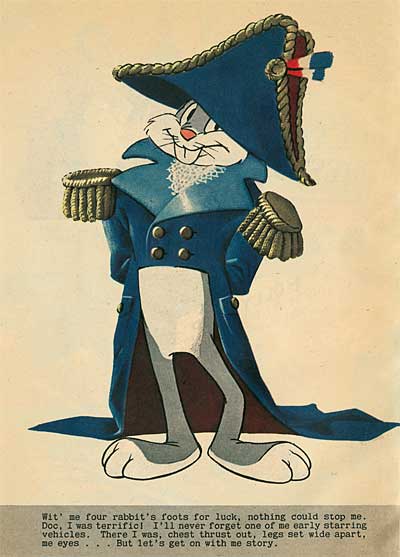
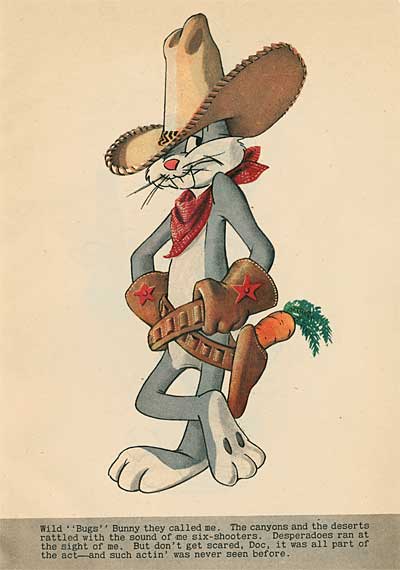
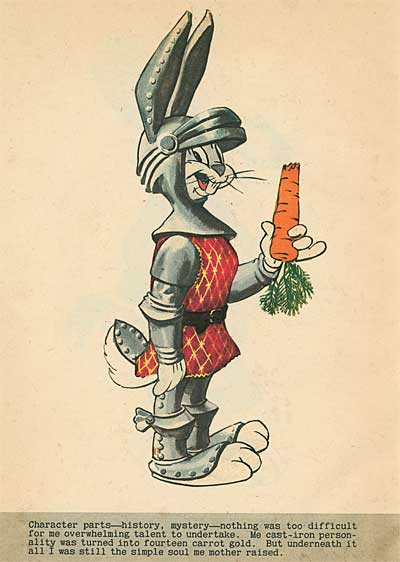
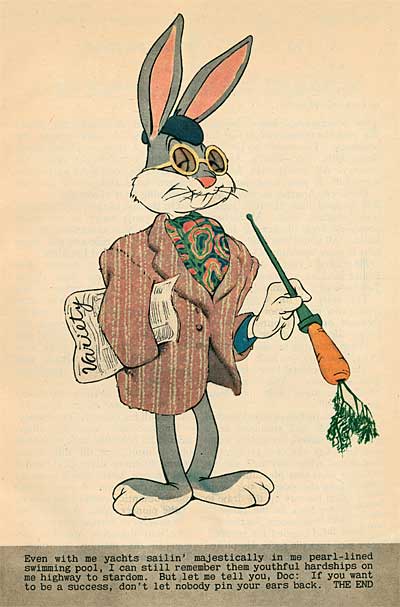
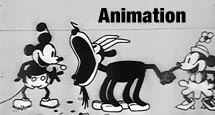
![]()





